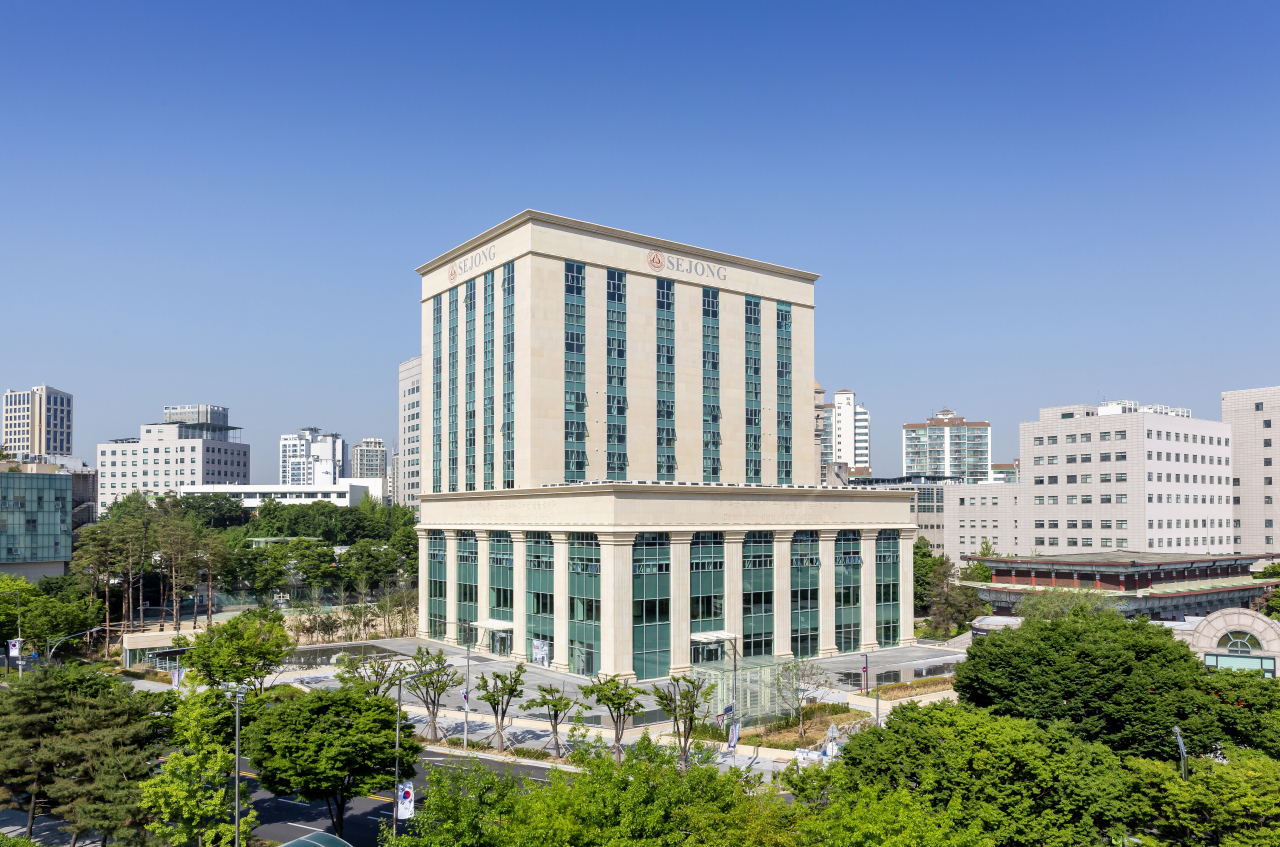
Sejong University, located in eastern Seoul, has taken the 76th spot in Asia and ranked No. 12 in Korea in the "2024 QS World University Rankings for Asia," conducted by Quacquarelli Symonds, the renowned global higher education analyst. This year's edition stands as the largest to date, featuring a whopping 856 institutions hailing from 25 different countries and territories.
Sejong University has been on an upward trajectory since 2020, climbing another three spots this year. Sejong University ranked No. 83 in 2020, No. 81 in 2021 and No. 79 in 2022.
The school stood out for its research impact, ranking 21st in Asia for citations per paper, up two places from last year. Taking the second highest spot in South Korea, the university highlighted its commitment to producing high-impact research.
In the internationalization category, Sejong University scored 92.1 points for cooperation, ranking 36th in Asia and second in Korea. Seoul National University (95.1) and Sejong University were the only two Korean universities to score above 90 for international research cooperation.
Sejong University's research excellence also led to it ranking first in the country for the first time in the 2023 Leiden University Rankings, which evaluate world universities based on the quality of their publications.
"In order to recruit excellent faculty members, we focus on assessing thesis achievements and the topics for research projects, thoroughly excluding one’s school ties and regionalism when hiring,” the school official said. The school also emphasized its efforts in strengthening support for publication in top academic journals, leading to tangible results across various fields.
The QS World University Rankings are compiled based on 11 indicators, including academic reputation (30 percent), employer reputation (20 percent), ratio of full-time academic staff members employed by per student (10 percent), percentage of faculty with a Ph.D. (5 percent), papers per faculty member (5 percent), citations per paper (10 percent), international research network (10 percent), percentage of foreign faculty (2.5 percent) and international students (2.5 percent), as well as proportion of inbound exchange students (2.5 percent) and proportion of outbound exchange students (2.5 percent).
-
Articles by Choi Jeong-yoon





![[Music in drama] Rekindle a love that slipped through your fingers](http://res.heraldm.com/phpwas/restmb_idxmake.php?idx=644&simg=/content/image/2024/05/01/20240501050484_0.jpg&u=20240501151646)




![[New faces of Assembly] Architect behind ‘audacious initiative’ believes in denuclearized North Korea](http://res.heraldm.com/phpwas/restmb_idxmake.php?idx=644&simg=/content/image/2024/05/01/20240501050627_0.jpg&u=20240502093000)








![[Today’s K-pop] Stray Kids go gold in US with ‘Maniac’](http://res.heraldm.com/phpwas/restmb_idxmake.php?idx=642&simg=/content/image/2024/05/02/20240502050771_0.jpg&u=)